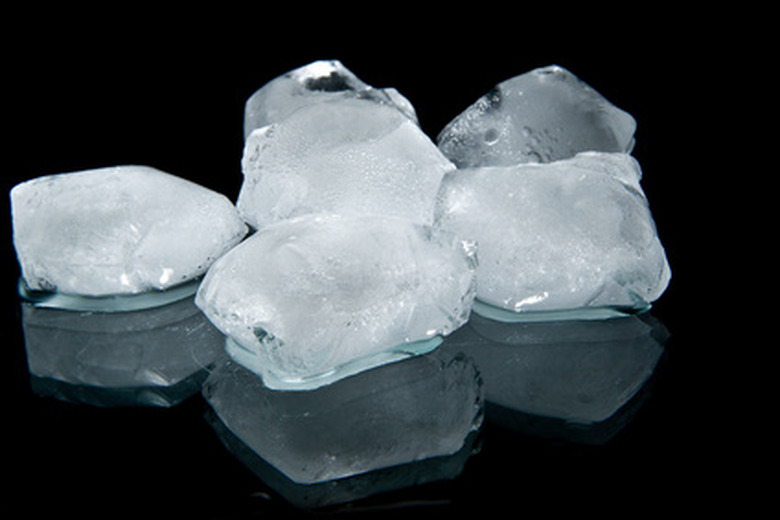How To Water Plants With Ice
Watering plants with ice cubes may sound strange, but it is actually a great way to hydrate hanging house plants. When you pour water over a hanging houseplant's soil, most of it speedily flows right past the plant's roots and out of the pot's drainage holes. Over time, this amounts to a considerable waste of water. For conservation-conscious home gardeners, watering with ice cubes is an effective way to release water slowly enough for a plant's roots to absorb it.
Step 1
Feel the soil's moisture level with your fingers. When the top third of the soil is dry, it is time to water plants with average water needs.
Step 2
Spread a few ice cubes over the top of the soil, but avoid allowing them to come into direct contact with the stem of the plant. The number of ice cubes will depend on the size of your cubes, the size of your plant and its water needs. Start out with a handful of ice cubes and then test the soil after they have melted. If the top third of the soil is still dry, add more.
- Watering plants with ice cubes may sound strange, but it is actually a great way to hydrate hanging house plants.
- For conservation-conscious home gardeners, watering with ice cubes is an effective way to release water slowly enough for a plant's roots to absorb it.
Step 3
Water your hanging plant with water once every two months or so. Use a watering can to water your hanging plant until it drips out of the drainage holes in the bottom of the basket. Then water again in this manner in 1/2 hour. Flushing the soil in this manner helps prevent salt buildup.
Water Plants With Ice Cubes
Put a plate or shallow tray under the plant's container. Use more ice cubes for very large containers. Insert your index finger 2 inches into the soil. If the soil is moist, the plant has received enough water. Check the soil's moisture level again when the ice cube melts. If the tray fills with water, you put too many ice cubes in the container. Reduce the number of ice cubes given next time you water.
- Water your hanging plant with water once every two months or so.
- Check the soil's moisture level again when the ice cube melts.
Things Needed
- Ice cubes
- Watering can
